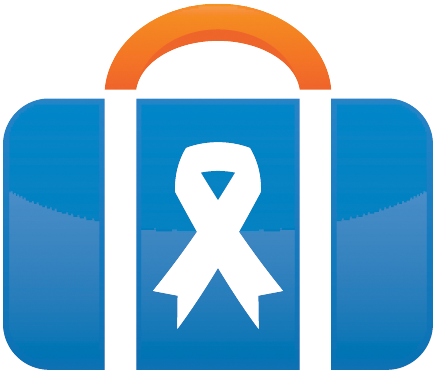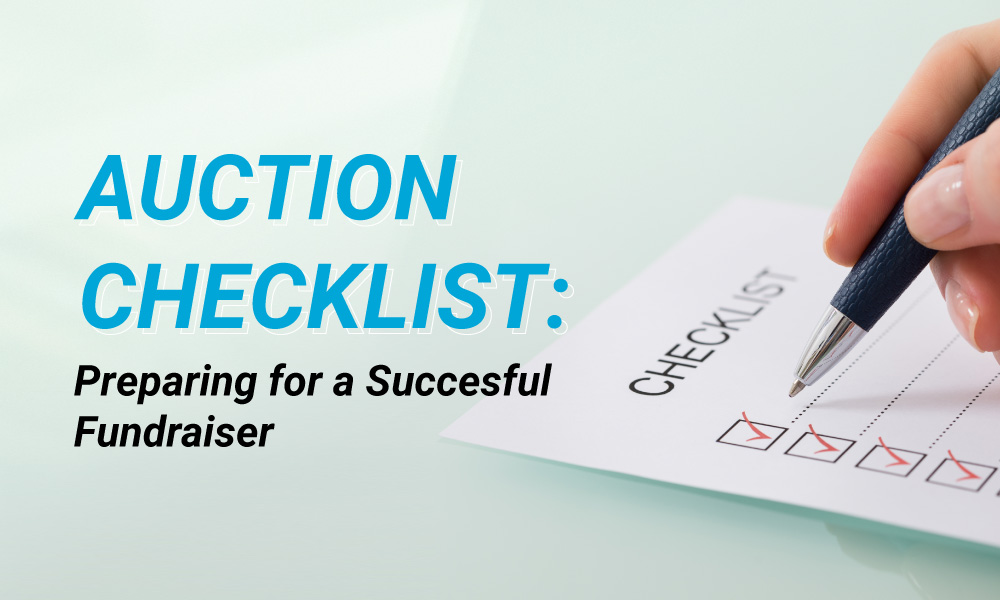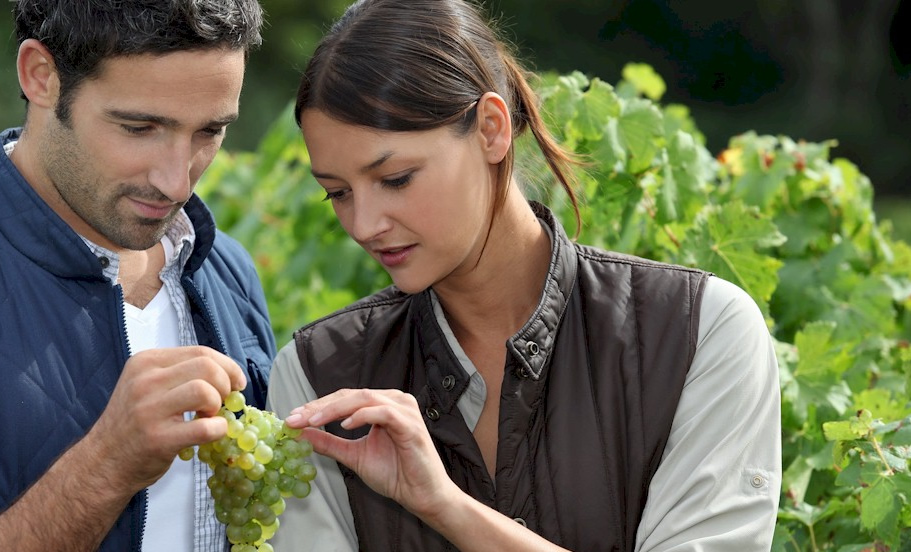When you think of auctions, you might envision a black-tie affair, complete with a fast-talking auctioneer and one-on-one battles for high-value items. If this image has turned you off from hosting an auction fundraiser, we have some great news for you.
You might be surprised to know that this is rarely how modern auctions function. In fact, many auctions have been adapted for an online format! There are many ways you can tailor your benefit auction to be accessible to your constituents and still profitable for your nonprofit.
Here are some tasks you should consider adding to your planning checklist:
- Decide your fundraising goals
- Determine your auction format
- Reach out to prize donors and sponsors
- Determine logistics
No matter the scale of your auction, you can make it a showstopping event that broadens your donor base and reputation in the community. Without further ado, let’s pull the curtain back on what you need to know to prepare for a successful auction!
1. Decide your fundraising goals
You might think this goes without saying, but establishing your goals is an absolutely essential part of the fundraiser planning process. It’s especially important when preparing an auction event because auctions can be held in various formats, and each will be associated with different expenses and have its own expected return on investment.
For example, an online auction wouldn’t require venue costs like a live auction would, but it does need a reliable digital platform to facilitate the event. Therefore, you should have a firm idea of how much you want to make during the auction and how, which may impact the features and upgrades you purchase.
These goals will also impact the prize-procurement process. Your organization should try to acquire as many items as possible as in-kind donations– to save money. If your organization wants to stage an auction with more valuable items and experiences, you’ll need a distinct acquisition process that involves in-depth research, both verbal and written pitch proposals, and a targeted list of potential donors which may include specific board members or supporters that have donated high-end packages in the past.
Take stock of what your nonprofit hopes to raise, possible methods of doing so, the variety of packages needed, and how much you can afford to spend on the auction as you develop your procurement strategy.
2. Determine your auction format
Now that you have your goals in mind, it’s time to get creative! As previously mentioned, there are multiple routes your organization can take to structure your auction. For instance, your nonprofit can host a:
- Live auction. This is the classic auction format that you’re probably already familiar with, conducted at galas where your guests bid on high-value luxury items presented by an auctioneer, such as art, experiences, and other unique goods and services. If you want to host a black-tie event, you absolutely can! However, if your nonprofit is looking for something simpler, never fear. Live auctions can be tailored to any demographic so that more people can get involved, in-person or virtual. Live events and their potential for forming emotional connections with your cause while you have their captive attention can make your organization more memorable; there’s a reason they’ve lasted so long!
- Online auction. The digital age has revolutionized fundraising practices, and auction events have transformed as well. During the pandemic, online auctions rose significantly in popularity as profitable fundraising events. They provide more flexibility than in-person auctions, eliminating the need to book a venue and be available at a specific day and time. Also, they’re more accessible and easy to attend, as your donors don’t even need to leave the house to participate. If you want a more interactive event, you can schedule live video sessions with entertainment, opportunity drawing, and more where donors can communicate with you and each other while getting excited to bid.
- Silent auction. The beautiful thing about a silent auction is that it can be implemented both online and in person at the same time. A silent auction format requires no auctioneer; instead, your attendees can view the items and submit bids through their phones or a mobile bidding application.
Are you unsure which auction format is most conducive to your donors’ needs? You might want to take a closer look at your organization’s data to guide your decision. Here are four data points that can help you make a decision:
- Marketing response analytics
- Auction engagement data
- Post-event feedback
- Post-event involvement data
If your nonprofit isn’t already collecting this data, consider starting right away. These are all indicators of trends among your donor base that you should pay attention to and can help inform your future auctions. That being said, all of these auction formats can be very successful!
3. Reach out to prize donors and sponsors
Here’s the fun part–figuring out what your prize pool will look like and where you’ll secure them. It’s important to first decide which auction audiences you want to attract so that you know who to approach for donated items. Looking at reports of past events will be beneficial to see what packages received the most bids, which sold for the highest bid-to-value ratio, and even which raffle prizes sold the most tickets. Also, the average value of your packages will probably be different for a black-tie gala than for a casual silent auction at your community potluck.
Once you’ve determined the types of packages that you’ll want to have to get your audience bidding, you can start strategizing your community outreach for in-kind donations. There are several groups you should approach:
- Corporations/national chains
- Local experience providers and venues
- Small businesses
- Local celebrities and entertainers
- New businesses in your area
- Current and past sponsors
Spend time with your team pinpointing prospects for your auction that make sense with the event’s theme and are attractive to your donor base. Also, be sure to research any businesses you are considering partnering with before reaching out to them. For example, enlisting the help of a business that was recently in the news for pollution for an environmental fundraiser might raise a few eyebrows, to put it mildly.
The next step is preparing your ask strategies. Believe it or not, there are ways to conduct outreach without cold-calling donors and gift officers. Research your prospects to identify potential donors whose services align with your nonprofit, have a history of giving, and currently have the capacity to make a donation. Then, be flexible about what prizes you will accept and thank your donors.
Another important part of your ask is to highlight how their gift is going to make a tangible difference in the world. Clearly state how the money raised will be used while including examples of impact achieved from past events to get them invested in your cause.
Additionally, it doesn’t hurt to remind potential donors of the benefits of in-kind donations, such as potential tax deductions and brand visibility.
If you’re approaching a corporation that may not have suitable in-kind donations available, you might instead seek a sponsorship. These can be incredibly profitable for offsetting event costs; Double the Donation’s corporate sponsorship guide advises tailoring your sponsorship requests as close to the business you’re approaching as possible to show you’ve done your research and clearly spell out how partnering with your nonprofit can help them achieve their philanthropic and business goals. Sponsorships are attractive to companies because they increase their brand’s visilibity and help customers to associate them with charitable activities and being helpful to the community.
4. Determine logistics
While seeking donations and corporate sponsors, it’s time to get down to brass tacks–the practical details of your auction. Here are some questions to consider:
- In-person auction:
- Where will we hire a benefit auctioneer?
- Where is a venue that is accessible to donors AND affordable for our nonprofit?
- Will we offer food or entertainment at the event?
- Online auction:
- What charity auction software will we use?
- Will we incorporate a live session, or will it be fully silent?
- For all auction events:
- How will we market the event?
- How will we collect data from the event to plan for the future?
- How should we assign starting bids for packages?
- Do we project earning enough from packages, fundraising appeals, and other fundraising features to hit our fundraising goal?
Once the event has concluded, your work isn’t quite done! Don’t forget to provide donation receipts to bidders, sponsors, and in-kind donors so donors can receive potential tax benefits. DonationMatch’s guide to tracking in-kind donations for nonprofits outlines the importance of following the Generally Accepted Accounting Principles (GAAP) when handling in-kind donations. Specifically, you’ll want donors to understand their impact on your nonprofit’s mission and provide the right information so government entities, particularly the IRS, will allow tax benefits without question.
Final thoughts on auction planning
While auctions might seem scary to someone who’s never planned one, they don’t have to be. You can decide on an auction format and change it over the years to fit your evolving donor base and accommodate new donor businesses. Auctions can offer so much value to both your nonprofit, your supporters, and the business community– now is the time to try it out!





Obiazor Emmanuel Emelike
Happy to work with you.